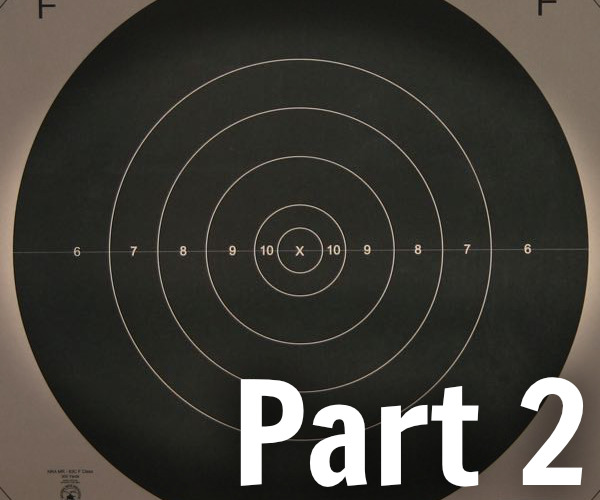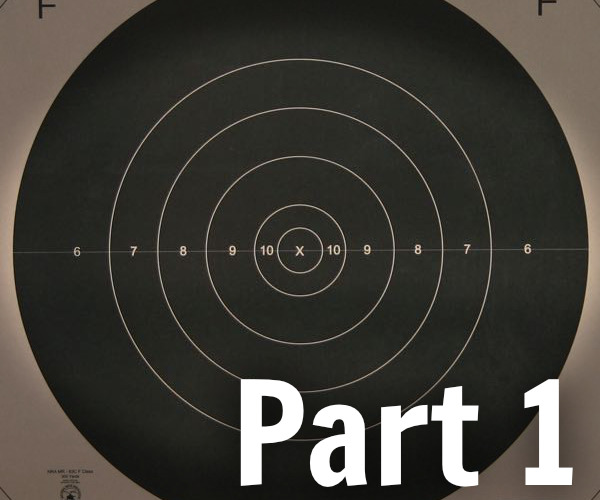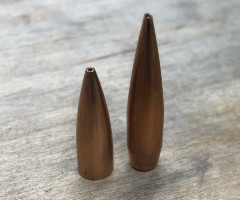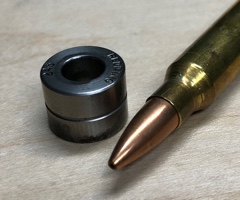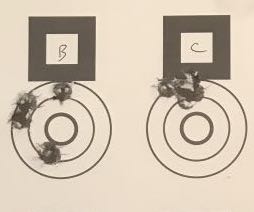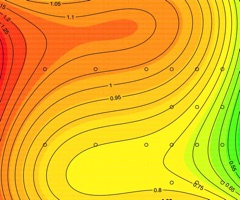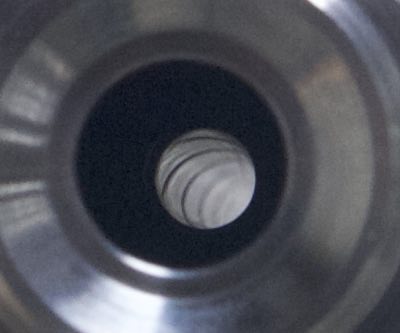Nightforce Competition Rifle Scope (2014 Edition)
By Damon Cali
Posted on May 10, 2014 at 03:06 PM
Regular readers will recall an older review of the Sightron SII 36x scope I picked up as an introductory F Class scope. At the time, F Class was a diversion for me - something I was going to try because I happened to have a more or less suitable rifle. I wasn't sure if I would like it or not, so I didn't want to spend a lot of money on a specialty scope. At $435, the Sightron SII fit the bill, while still being appropriate for F Class.
Well, it turns out that F Class is a ton of fun, and I got hooked. That Sightron served me well for my first season of F Class, but it was somewhat limiting. Specifically, I had the following issues:
- The ocular lens was difficult to adjust
- Parallax adjustment is on the objective, and fairly difficult to adjust
- 36x fixed is ok, but I'd like a little range on either side of that
- A graduated reticle would be nice to dial in sighters precisely, and the SII has a target dot cross hair style reticle
- 7.5 MOA per turret turn is annoying
- Turrets are hard to read in position
- I'm always losing turret knob caps
- Optics are what you'd expect from a $425 36x scope. A bit hazy, but usable
I have an older Nightforce Benchrest (circa 1999) that I've been happy with, so the first brand I looked at was Nightforce. The Competition model jumped out at me initially, but I was disappointed by the reticle offerings and the turrets. For that much money (approximately $2,350), I needed everything I wanted, not just some of it. So I kept looking.
Then Nightforce announced the 2014 edition at the 2014 SHOT show and it was everything I was looking for:
- 1/8 MOA clicks
- 10 MOA per turn
- Zero-stop
- Graduated Reticle - calibrated at 40x
- Easy to read turrets with two windage styles to choose from
- Side focus
- "Tactical style" knobs - no turret caps to lose
- Magnification from 15-55x
- Easy ocular adjustment
In short, the 2014 Model corrected every flaw I saw in the 2013 model that kept my wallet in my pocket. I placed an order as soon as they hit the stores.
First Impressions - For Competition Only
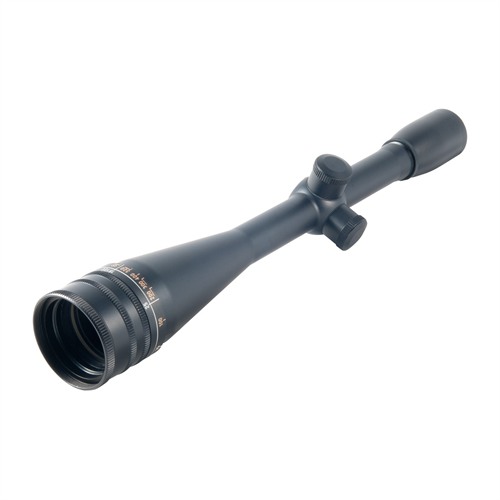
The Nightforce Competition is not a small scope. It's got some considerable heft at just under 28 oz. When I picked it up for the first time, I realized why it has a 50mm objective instead of a 56mm. You would think with such high magnification, you would want the largest available objective to increase the exit pupil. But this is a competition scope, and it has a very clear and singular purpose. And for that purpose, weight is bad.
Given that the scope will be used from a stable (prone or benched) position under generally favorable range conditions, the choice to trade exit pupil for lighter weight seems a sound one. This is not a scope you'll want to use in the field, as it is pretty finicky about your eye placement behind the ocular. At magnifications over 25x or so, you have to have a consistent, stable position. A 56 mm objective would have helped, but only a little. 55x is 55x - a tricky "eye box" goes with the territory.
But it's that attention to detail and understanding of how this scope will be used that makes the Nightforce Competition special. It does not try to be all things to all users.
There is no illumination, for example. One might expect illumination in a scope that costs what the Competition does, but I have no need for it. Like most people, I shoot F Class during the day, and the reticle is plenty discernible over a High Power target without illumination. I'm glad they spared the expense and slight weight increase and skipped a feature I don't need.
You might also expect a first focal plane scope for this amount of money. But this scope doesn't need it, and I don't want it for known distance shooting. I would rather have a consistent sight picture at all magnifications. Again, Nightforce made the right choice for the intended use, keeping this scope from turning into a $3,000+ monster.
I chose the FCR-1 reticle, which I've read was designed with the input of F class shooters. It shows, because it is perfect for that use. The reticle subtensions are spaced appropriately - at 1 MOA increments. It's not so busy that it obscures the target detail, nor is it so sparse that the subtensions are hard to use. The subtensions are marked with numbers, which is a nice touch, since it's easy to forget that detail, especially if you have more than one rifle. Also nice is that the reticle has a small note at the bottom reminding you of the power at which the subtensions are accurate - 40x.
Most second focal plane scopes are calibrated to have their subtensions accurate at max power. This is not the case with the Nightforce Competition. Nightforce knows enough about it's customers and the way they shoot to know that this scope will not spend most of its life at 55x, and 40x is exactly where I would have asked them to calibrate the reticle. 40x is where I generally like to start my F Class shooting. I might adjust it a little up or down from there depending on the conditions, but 40x is a good balance between magnification and usability.
Mounting the Scope
Because my midrange rifle is dual purpose - it is set up to shoot sling with irons and for F class - I wanted a mounting system that would be easy to remove and had reasonably good return to zero. A one piece base seemed appropriate. I considered a quick detach base, but had a hard time finding one low enough, and didn't like the idea of paying extra to not have to put a wrench in my bag. Aluminum was also something I wanted because weight matters. Finally, I wanted a zero MOA base, because my picatinny rail already has some elevation built into it - about 20 MOA worth. Nightforce recommends a 20-30 MOA base for this scope and I agree. To figure out how much you'll need, you'll need to run some numbers with a ballistics calculator, but 20 or 30 MOA is an excellent place to start.

It was surprisingly hard to find a mount met all those requirements, but Badger Ordnance came through with their one piece mount. It mounted up with no problems. Nightforce includes excellent instructions.
At the Range
A lot of shooters will talk endlessly about optical quality. I don't care as much. As long as the scope is usable without straining my eyes, I'm happy. This was an area that I thought could use some improvement with my Sightron SII. Although I did not make any quantitative measurements of optical quality, I always had the feeling of looking through a fog. I had to try to see the target. Sure, I could resolve the rings on an F Class target, but the feeling of effort was always there. And that is a distraction.
With the Nightforce Competition, that effort is gone. It's just a clear sight picture with a reticle superimposed. It doesn't look like you're looking through several pieces of glass. You're just looking at the target.
I wasn't amazed by the lack of optical aberrations or wowed by the clarity. I could just see. That is all I ask of a scope, and this one delivers - even at its full magnification of 55x.
I spent a few rounds getting sighted in and got a feel for the turrets. The first thing I noticed was that the numbers on them are huge, and they are very easy to read while behind the rifle. My rifle is a pretty accurate 6mm XC built on a Barnard Model P action, and I had the rifle zeroed within a 1/8 MOA click in short order. The clicks provide clear tactile and audible feedback while being stiff enough to not worry about them shifting when your rifle is cased. Focusing/parallax adjustment is smooth and easy, not twitchy.
There isn't a lot to report here, because again, everything just worked as it is expected to. After a short range session, satisfied with my 100 yard zero, I packed up and headed home. At home, I set the elevation zero stop. This is a feature that locks the turret at your 100 yard zero (or wherever you decide to zero) so that you cannot go any any further, giving you a clear starting point for when you need to dial up for a longer range. You no longer have to remember where your scope's zero is - just turn it down until it hits the stop and dial up from there. Setting the zero stop involves loosening a set screw, removing the turret cap, and then adjusting a clutch disc inside the turret. It took me about two minutes from start to finish.
Tracking at Mid Range
The next time I took the 2014 Nightforce Competition out to shoot was at the local mid range (600 yard) F Class match. I have calculated my 600 yard elevation to be 10.5 MOA up from my 100 yard zero, so I dialed that amount in and shot my first sighter. It came up an 8, and a quick correction had me dialed in at exactly 10 MOA up.

An obvious question is, who's wrong - the calculator or the scope? It's well known that ballistics calculators rely on imperfect data and can be off a little. Something we think less about is that our scopes turrets are also imperfect. When I dialed 10 minutes up, did I really get 10 minutes? The only way to tell is to test it. So I took the rifle to the range and set up a target at exactly 100 yards (this is important). I shot a group at zero, and then shot another one with exactly 10 minutes dialed on the elevation turret. If the scope is tracking correctly, the distance between the centers of the two groups should be 10.47 inches.
The groups measured somewhere between 10 3/8 and 10 1/2 inches apart according to my trusty tape measure. I can't give an exact measure, because the groups themselves were about 1/2 MOA five-shot groups, and pinpointing the true center is an uncertain matter. Even with this small amount of data, I am comfortable that the Nightforce Competition tracks as well as I need it to, at least out to 10-15 MOA. If I needed go beyond that, I would repeat the test at 20 MO and 30 MOA to see if there is any inconsistency in the tracking. That the first 10 MOA went well is a good sign.
The Reticle
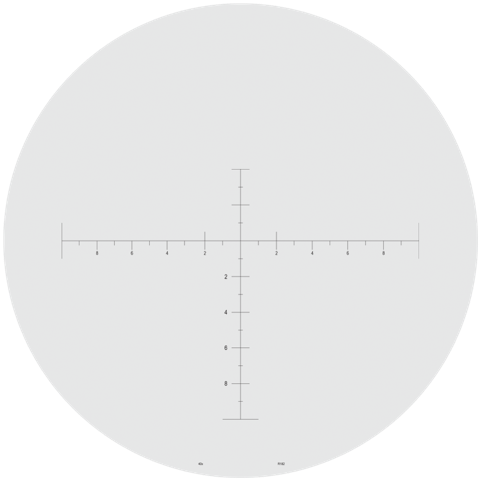
The new FCR-1 reticle really shined in its first F Class match. With my Sightron, I would have to look at the spotter and superimpose a mental MOA grid on top of the target rings, and figure out my adjustments. With the FCR-1, I just use the reticle like a ruler and measure from the target center to the spotter. It makes my spotter adjustments more precise, which is a big help. Having your zero slightly off in F Class will cost a point or two (or at least an X or two) over the course of a match just by being off center. Worse, you'll be thinking about compensating for where you think your zero actually is instead of focusing on the wind, sight alignment, and trigger control. That can cost me another point or two. And with only two sighters per relay, you don't have a lot of time/ammo to work with to get it right, so a nice purpose-built reticle is a welcome feature.
But! So many of the scopes on the market have subtensions all over the place. They're too tightly packed or to far apart. Most are not labeled. Was that two MOA per tick or one? Most reticles on the market today do not substantially reduce the mental load of figuring out your adjustment. Although the marks are helpful, you still have to think quite a bit about what they mean. The FCR-1 helps reduce that mental load because it's appropriately marked and labeled. It's just more usable. It's a small thing, but it matters to me.
Summary
Overall, I'm pleased with the 2014 Nightforce Competition. It's an uncompromising scope with a very specific purpose in mind, and it is optimized for that use. It's a crappy scope for tactical matches and an even worse one for hunting, but for F class and long range benchrest, it's just the ticket.
The only thing about this scope I might change is the objective diameter. A larger objective would help slightly with what is a difficult exit pupil at high magnification. Of course, that would mean more weight and cost, so the choices that Nightforce made are understandable.
It seems paradoxical, but I wasn't overwhelmed by the quality of the scope. I wasn't wowed by sparkling optics or Swiss watch turrets. This scope is so good that it just gets out of your way, and that is exactly what I want my scope to do. There is enough mental load at a match already, and not having to think about the scope is a competitive edge. It's all in the details. The clicks are solid. The turrets are easy to read, the focus is effortless, the reticle makes sense, and the glass is clear. As they say in the technology business (my day job), "it just works".
Unlike the 2013 Nightforce Competition, which had some small but frustrating flaws, I think Nightforce nailed it with the 2014 model. I'm very happy with it.
Damon Cali is the creator of the Bison Ballistics website and a high power rifle shooter currently living in Nebraska.
The Bison Ballistics Email List
Sign up for occasional email updates.
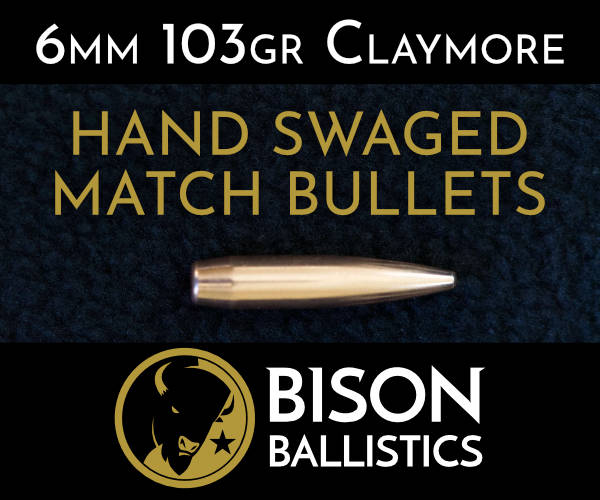
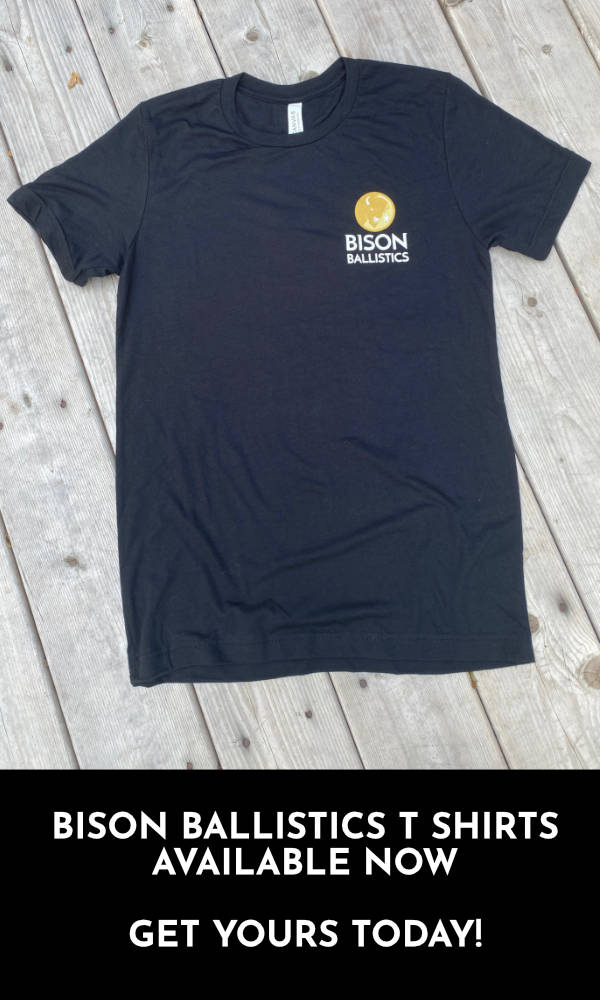
Want to Support the Site?
If you enjoy the articles, downloads, and calculators on the Bison Ballistics website, you can help support it by using the links below when you shop for shooting gear. If you click one of these links before you buy, we get a small commission while you pay nothing extra. It's a simple way to show your support at no cost to you.
